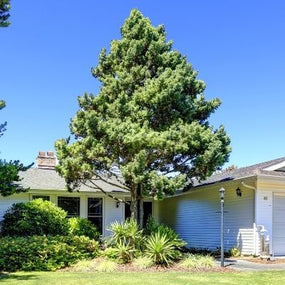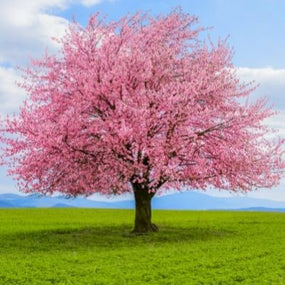Specimen Trees
Ready to transform your landscape in a single planting? Specimen trees are living works of art—bold silhouettes, four-season color, and sculptural branching that draws every eye to your front walk, courtyard, or garden room. We curate statement makers—from cascading weeping cherries and cloud-like Japanese maples to architectural evergreens like Blue Atlas Cedar—chosen for real-world performance, not just catalog glamour.
At Garden Goods Direct, you get nursery-grown, zone-appropriate trees with honest sizing, growth-habit notes, and clear planting and pruning guidance. We back every order with our "We Grow Together" Promise and ship fast, so you can buy specimen trees online and enjoy museum-quality presence—without the guesswork.

Evergreen Specimen Trees
34 products

Flowering Specimen Trees
41 products

Large Specimen Trees
0 products

Topiary Specimen Trees
1 products
If your landscape needs a focal point, start here. Our Specimen Trees Collection spotlights trees with exceptional form, foliage, bark, or bloom—the kind of features that make guests stop and stare. Think laced foliage Japanese Maples for jewel-tone color, weeping forms that spill like water, and upright, architectural conifers that frame entries with year-round structure.
Each selection is curated for site versatility—from petite, patio-perfect silhouettes to commanding centerpieces for large lawns. We prioritize disease resistance, clean leaves, and strong branching, so your statement tree looks elegant in April and just as compelling in January.
Because these trees do the heavy lifting of design, we include precise dimensions, growth rates, and light/soil preferences to help you match the right specimen to your space on the first try.
Growth Habits & Seasonal Interest
Specimen trees excel across seasons. Spring brings blossom clouds (Cherry Trees, Dogwoods) and fresh chartreuse or burgundy flush on Maples. Summer highlights fine textures—fern-like foliage, pendulous sprays, and layered canopies that cast dappled shade. Autumn delivers ember-bright reds and ambers, while winter reveals peeling bark, muscular trunks, and sculptural branch architecture.
Habit is everything. Weeping forms create instant romance over water features and walls; vase-shaped and layered canopies frame doors and windows; narrow, columnar conifers add vertical punctuation where space is tight. Many cultivars retain their color in heat and sun, maintaining a curated look without constant coaxing.
Under the surface, dense, well-branched frameworks and balanced root systems help these trees withstand wind and weather, preserving their silhouette for decades.
Landscape Uses & Functional Benefits of Specimen Trees
Use a single specimen to anchor a front entry or cap a garden axis; plant a pair to compose a formal allee; float a weeping tree near water or a dry streambed for instant serenity. Architectural evergreens serve as four-season sentinels, masking utilities and softening hardscape lines, while flowering specimens provide seasonal drama and support pollinators.
Specimen trees also elevate property value. They create scale, depth, and cohesion—turning a standard yard into a curated landscape. Layer with structural shrubs (Boxwood, Hollies) and understory perennials (Hellebores, Heuchera, Grasses) to spotlight the canopy and extend interest at ground level.
For small spaces, opt for compact or grafted forms that maximize artistry within minimal square footage. On large lots, combine a heroic centerpiece with supporting “secondary focal” shrubs to build a complete composition.
Maintenance & Durability Advantages
Great specimens aren’t high-maintenance when sited well. Start with full sun to part shade (maples and many ornamentals appreciate afternoon shade in hot zones) and well-drained soil. Plant with the root flare at or slightly above grade. Backfill with native soil, water deeply, and mulch 2–3 inches—clear of the trunk—to moderate temperatures and conserve moisture.
Training is minimal but meaningful. In the first 2–3 years, a light winter/early-spring prune to refine the structure, remove crossing wood, and preserve the natural form sets the template for the tree's life. Weeping and grafted forms may require selective staking or tie-backs early on; once established, they maintain their silhouette with minimal intervention.
Feed modestly with slow-release fertilizer or compost if growth lags, and irrigate deeply during prolonged heat or drought. Choose cultivars bred for vigor and disease resistance, and you’ll spend more time enjoying the show than maintaining it.
